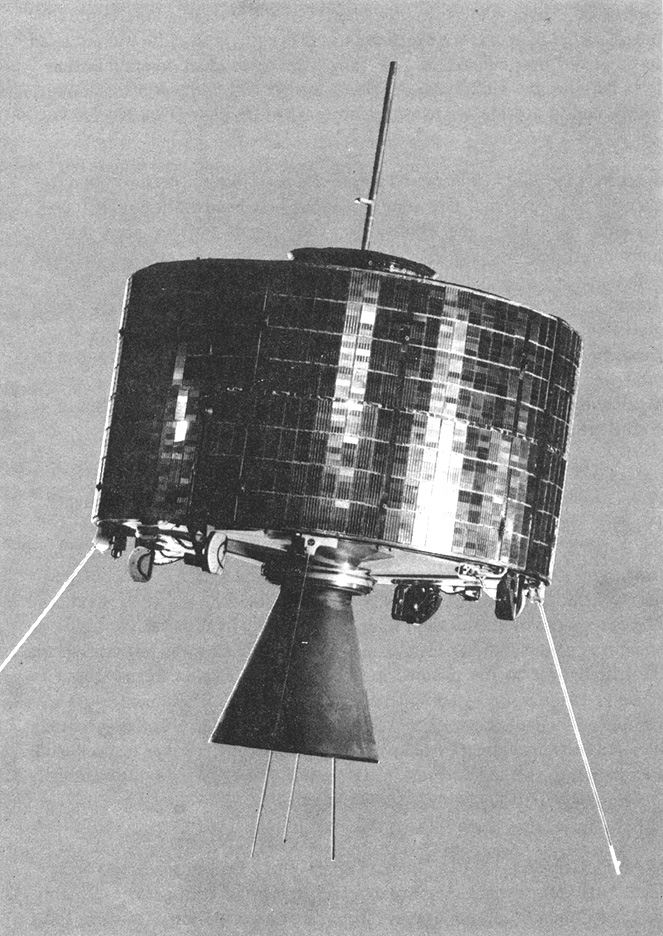Fifty years ago today — July 26, 1963 — a Thor Delta rocket out of Cape Canaveral placed the first geosynchronous satellite in orbit.

(Syncom 2, which looked remarkably like Syncom 1. NASA image.)
Syncom 2, a follow-on to the lost Syncom 1, was geosynchronous but not geostationary: its orbital inclination was 33 degrees from the equator, which meant that its ground track formed a figure-8, the top and bottom of which were 33 degrees north and south of the equator, respectively. The satellite enabled transmission of “voice, teletype, facsimile, and data” between ground stations and ships at sea, and proved the viability of communication relay from high orbit that science fiction author Arthur C. Clarke had envisioned many years before. The Department of Defense took over operations of the satellite in January 1965.
Also on this date in space history, 5 years before Syncom 2 launched, the Explorer 4 satellite was launched from Cape Canaveral on a Jupiter C rocket. It measured charged particles (protons and electrons) in the Earth’s radiation belts, though the satellite’s unintended tumbling made the data hard to interpret and the satellite lost power after only three months.








